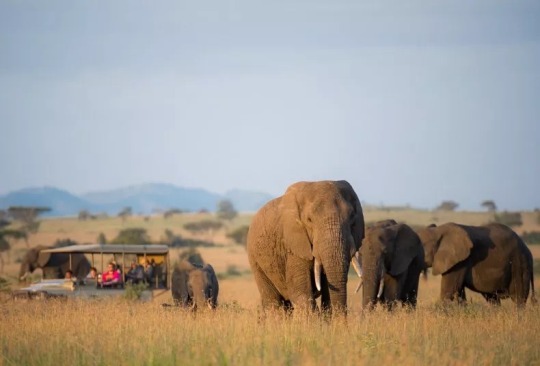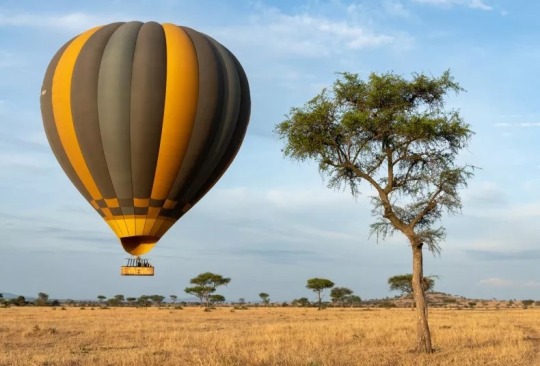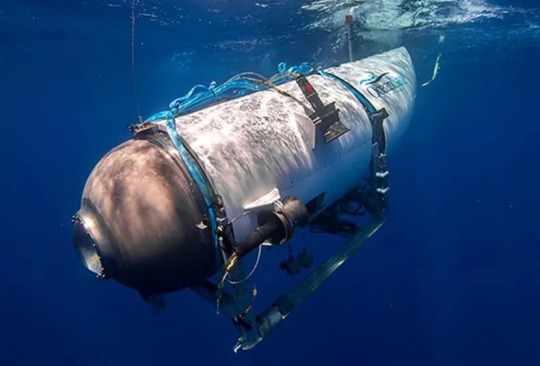#Bengal COVID 19 Cases
Explore tagged Tumblr posts
Text
RG Kar MCH the focal point of the Kolkata Rape and Murder Case. Only because monsters committed such a heinous crime with the Dr. Tilottoma.
Old articles are thought to show the numerous reported records which were ignored or unresolved.
--------------------------------------------------
1999:
The lone name to emerge from the shadows of 1999 was Madhusudan Sau, whose life reportedly ended in February of that year, leaving behind a veil of mystery and unanswered questions. No details have been shared or found about him, to date.
2001:
The mysterious death of fourth-year student Soumitra Biswas sparked allegations that he was murdered for attempting to expose a porn ring. Despite the arrest of a female student, Auromita Das, and police questioning members of the SFI, the case remains unresolved, with little progress made by the West Bengal Police CID.
2003:
In February 2003, two back-to-back incidents at RG Kar Medical College brought the total of suspicious deaths and suicides at the institution to four within a few years.
The cases include Arijit Datta (February 2003), who reportedly committed suicide by jumping off a hostel roof, and Praveen Gupta (February 2003), who survived a suicide attempt.
2016:
In October 2016, the decomposed body of RG Kar Medical College professor Gautam Pal, 54, was found in his locked South Dum Dum apartment. Police suspected a heart attack, as his bed was undisturbed, but blood stains, facial bruises, and the absence of a suicide note raised concerns. The contents of his stomach were preserved for poison testing.
2020:
In May 2020, 25-year-old trainee doctor Poulami Saha reportedly committed suicide by jumping from the 6th floor of the emergency building during the COVID-19 pandemic. While no suicide note was found, police indicated she had been suffering from depression. Conflicting reports suggested she may have jumped from the 11th floor, but the hospital did not confirm the suicide.
2023:
In January 2023, RG Kar Medical College student Sayan Mondal died during a trekking trip in Uttarakhand, marking a departure from previous incidents that occurred within the hospital. After reaching Brahmatal, Mondal collapsed while descending, suffering from severe breathing difficulties. He was rushed to Dewal Government Hospital but was declared dead on arrival.
2023:
In August of 2023, intern Suvorojyiti Das, 23, from RG Kar Medical College and Hospital, died from an apparent drug overdose. The Tala Police classified the case as 'unnatural death,' attributing it to an antidepressant overdose, and found no suicide note or evidence of foul play. Das was discovered unconscious by his family and died in the hospital’s critical care unit after being rushed there.
2023:
In September 2023, a final-year medical student accused Sandip Ghosh of ignoring a ragging complaint and threatening him to falsely claim the issue was resolved. Despite Ghosh’s transfers, he frequently returned to the hospital. The student reported enduring physical and mental abuse over three years and criticized Ghosh’s inaction and favouritism towards certain students.
...
The fact is that this fucker Sandip Ghosh initially declared her death as a 'suicide' too, but I guess the evidence were too big for him to tamper with.
There might be more unreported cases Between all these years, especially 2003-2016 which were either hidden or voices were silenced.
Shame on you TMC for standing beside this man.
#desiblr#fypシ#fyp#rg kar medical college#we want justice#reclaim the night#women rights#women#human rights#humanity#desi tag#desi tumblr#im so fucking done#sandip ghosh#this fucking bastard#tmc#writeblr#justice for moumita#doctors#indian#india
12 notes
·
View notes
Note
whenever you have time and energy, please let us hear more of your thoughts on violence under capitalism
Oh, I have the time and the energy, I just didn't want to make the previous ask/answer excessively long!
I think another basic point about both anarchism and communism is that there is violence inherent in capitalism. Capitalism requires the exploitation of the workers by the bosses in order to make profit.
If we take this on a global scale, I think we're all aware of the concept of "sweat shops" in the general, but often we don't consider how unsafe these places are to work. These are factories with no, or very limited regulation- we hear about factory collapses in Bangladesh, where people die in their hundreds. We don't hear about the individuals who are injured or killed every day globally due to unsafe working practices.
Even in the UK, a country that has reasonably good health and safety legislation (of course, legislation is not always followed), in 2018-2019, 147 workers were killed by "accidents at work", as well as 92 members of the public. That's more than 4 people each week. In 2020-21, bearing in mind there were mass lockdowns and many industries stopped working for a period of time, 123 workers, and 80 members of the public were killed. (figures from HSE). These figures do not include deaths from covid-19.
In fact, part of the reason I started this blog during the coronavirus pandemic was because I was aware people were being put in dangerous situations, and covid was being spread more widely because capitalism and profit were being prioritised above people's lives.
The way we are forced to work is killing many people, and injuring huge numbers. In 2021-22, about 150,000 people in the UK sustained an injury at work which meant they were absent for more than 7 days (so potentially quite a serious injury).
Injuries can be caused by unsafe working practices or environments, but equally things like rushing because you are under pressure can lead to a trip or a fall, or people trying to carry things that are too heavy or awkward on their own, and sustaining an injury. The nature of capitalism is that time is money, so we are encourage to work fast, to work when tired, and this can cause people to get hurt.
So that's a little bit about the violence inherent in "work", but what about the violence inherent in the system?
Capitalism kills people- capitalism has always killed people. The nature of the system is that some of us have money and access to all the things we need (food, housing, medication and so on) and some of us don't. People die, or are injured or get ill all the time due to homelessness, even in so-called developed countries. People die due to lack of food, even when there might be food available. People die due to lack of medicine all the time, even in countries where this ought to be freely available, because they cannot afford it.
Whenever people criticise communism, they like to bring up the famine under Stalin. I'm not going to launch into a defense of Stalin, but when we criticise capitalism, we should therefore look at famines caused by it, or contributed to by it. Historically, the potato famine in Ireland, or the Bengal Famine in India (when it was under British rule) are just two examples. We can also look at the ongoing famine in Yemen, and increasing problems in Sudan and the surrounding area.
Many people consider these famines to be solely due to natural causes, "acts of god" if you will. But that's not the case.
If we look at the potato famine, sometimes called an Drochshaol in Gaelic, solely because that's the one I'm most familiar with, we can see that it was caused largely by a capitalist, colonialist system, and the impacts of it were made far more extreme due to capitalism.
People will tell you the potato famine was caused by the potato blight, but it's not as simple as that. There was potato blight across Europe, in the 1840s, leading to about 100,000 deaths across the whole of Europe. In Ireland, more than 1 million people died, and many more emigrated, causing a 20-25% fall in the total population.
Part of the reason for this was the reliance on a single crop. This wasn't a situation chosen by the Irish people. Instead, English landlordism pushed the poorest Irish people into a situation where they had very little land, and the only crop that could sustain them on their land was the potato. Meanwhile, much of the agricultural land was used to grow wheat or other grains, or farm meat, which was solely used for the profit of the landlords.
Arguably the greatest tragedy of the Irish famine was that there was plenty of food in Ireland. It was just all being exported, so that people could make money. And during the famine, people continued to do this, and continued to make money, even whilst people were literally starving in the streets.
And during all of this, the English landlords continued to charge rent. Even before the famine, many families in Ireland could not fully afford their rents, and were supported through relatives working abroad (usually seasonal work in Britain). During the famine, there were a huge number of evictions.
I recently watched a BBC TV show about evictions (because English landlords haven't changed at all) and one of the tenants facing eviction said something along the lines of "eviction is a really violent act"- which I believe is true. And it is even more violent in a situation where your family is starving and everyone around you is starving.
Anyway, my point is that the landlords were able to evict their tenants, in order to make more money, causing even more deaths. And all of this is was fuelled by a capitalist, colonialist system.
And in the last 170 or so years, we can see that on a surface level, things have improved somewhat in some countries. But equally, in England, we still live in a country where someone can evict you for no reason and make you street homeless if *you* can't find another house in time- yes, in some circumstances, "the council" will help house people, but the housing offered is often inadequate or limited for families- and it often doesn't exist for young, single people- so they end up sofa surfing or sleeping on the streets.
In the USA, people still die or end up in extremely difficult situations because they can't afford the medical treatment they need.
I'm sure anyone who lives in a capitalist country can point to some key injustice which leads to death or serious ill health, and is driven solely by profit and the property owning class. This is the violence inherent in the system, and it kills far more people than interpersonal violence ever could.
Again, this has become very long, and there's still more in it that I want to explore, so do keep sending me asks on these themes if you are interested.
57 notes
·
View notes
Text
Inside The World of Ultra Wealthy Extreme Tourism
— By Anna Skinner | June 22, 2023
Ultra-luxurious vacations costing hundreds of thousands and even millions of dollars have increased in popularity since COVID-19 traveling restrictions have eased.
Luxurious vacations can include everything from visiting the International Space Station, to scaling Everest, to going on a private jet tour around the world's safaris.
Such excursions can threaten the environment or lead to exorbitant rescue missions and, rarely and most recently, tragedy.
Many consider a vacation as an escape to the beach for a week or, if they're lucky, traveling overseas. But for the world's ultra-wealthy travelers, the sky isn't even the limit.
For a price, tourists have access not only to the depths of Earth's oceans to visit the RMS Titanic in its final resting place, but also to out-of-this-world destinations like the International Space Station.
These excursions can be risky. The former—a trip costing $250,000 per person—took a horrifying turn as five people are now presumed dead after their submersible lost communication only one hour and 45 minutes into its trip. Operator OceanGate Expeditions announced Thursday afternoon that it believes all five lives have "sadly been lost," and the U.S. Coast Guard said that debris found in the area was consistent with a "catastrophic implosion" of the vessel.
For some, the risk involved in going on the ultimate adventure is all part of the appeal, and businesses to cater to their taste for adventure are booming.
In perhaps the most extreme example, three civilians paid an estimated $55 million each to board a SpaceX rocket and be blasted to the International Space Station in April 2022.
Other wealth thrill-seekers have to content themselves with staying on Earth. A trip to the South Pole can be arranged for about $100,000. A no-expense-spared expedition to conquer Everest costs about the same, although for the elite it is becoming rather crowded: on a single day in 2019, 354 climbers made it to the top.
For those seeking a slightly more sedate taste of the wild, sought-after trips span from luxurious African safaris to guided tours in the Arctic Circle.
Exclusivity, adventure, and danger are a potent mix for the ultra-rich, and it is increasingly becoming impossible for them to resist the allure—or to brag about it afterward.

Guests observe elephants at the Singita Serengeti House in Africa. Courtesy of Mike Johnson/Singita
A Look Inside a Wealthy Vacation
International travel companies like Abercrombie and Kent offer one-of-a-kind excursions that present incredible opportunities, such as searching for Bengal tigers in India or encountering the endangered mountain gorilla in the Ugandan wild. Many of these luxurious vacations are equipped with the utmost comforts. In Abercrombie and Kent's case, clients have access to a private jet.
Trips come with a four- to six-digit price tag. With the more luxurious options, clients can experience some of the world's elusive locations crackling with adventure while bypassing many of the headaches that accompany world travel.
Abercrombie and Kent's director of media relations Pamela Lassers told Newsweek that the international travel company strives to "create thrilling adventures for top-tier clients who have pretty much done everything."
Take for example Abercrombie and Kent's 25-day trip "Wildlife Safari: Around the World by Private Jet 2024", which takes clients on a private jet tour around the world, exposing them to a multi-continental safari with everything from snow monkeys and whale sharks to orangutans, gorillas and Bengal tigers in one trip.
The trip, which costs just shy of $165,000 per person, often sells out within three months.
By participating, clients not only are exposed to myriad environments and safaris, but they are able to bypass international gateways and are accompanied by their own crew on the private jet. Private transportation saves time, which Lassers says many Abercrombie and Kent clients, often busy entrepreneurs, don't have much of.
"They have traveled a lot and seen a lot of the world and now they are interested to getting to more remote places," Lassers said of Abercrombie and Kent's clientele, who seek out the organization's wildlife safaris or expedition cruises to Antarctica.
Lassers added that many of the destinations include access to experts to educate travelers. For example, when a client visits Antarctica, they might encounter a specialist who educates them on the changes that have taken place on the continent because of climate change.
“They have traveled a lot and seen a lot of the World and now they are interested to getting to more remote places.” — Abercrombie and Kent Director of Media Relations Pamela Lassers
"It's a learning vacation in addition to being an adventure," Lassers said.
Lassers told Newsweek that Abercrombie and Kent has seen a dramatic uptick in those seeking adventurous vacations through the company, and 2023 is the company's strongest year in its 61-year history. She said that the COVID-19 pandemic influenced the way people travel and inspired them to take advantage of trips that expose them to the world.
Easing COVID-19 travel restrictions also has led to an increase in Singita bookings as well. Singita is an African-based game lodge operator exposing visitors to safari lodges and wildlife reserves.

Guests partake in a hot air balloon ride at the Singita Serengeti House in Africa. Courtesy of Singita
"Singita has seen an incredible bounce back in business; and demand for ecotourism," Singita spokesperson Lisa Carey told Newsweek in a statement. "Our guests are longing to travel consciously; to get into nature to disconnect from the pressure of daily life."
Singita lodges expose travelers to "restorative sanctuaries and encounters in the bush that guests won't find anywhere else," accompanied by privacy and award-winning hospitality, according to Carey. In addition to witnessing African wildlife in their natural habitat, Singita guests can choose from a variety of luxury accommodations and activities, such as massage treatments.
Rates for the luxurious lodges vary greatly, depending on the size of room and what part of the year a tourist books their vacation. For example, at the Singita Faru Faru Lodge, rates are as low as $1,910 per adult per night in a suite for the off-season to $12,254 per night for a two-bedroom suite, which can accommodate up to four guests.
The organization appeals to clients with a philanthropic heart, as well.
"They can contribute to numerous conservation initiatives and community empowerment [programs]," Carey said. "Modern conservation requires a keen focus on keeping tourism, communities and wildlife in a constructive balance. Our guests are looking for ways to travel more responsibly and be immersed in nature and learn about local cultures or food; and to make a difference by choosing to travel with a sustainable provider."
The Darker Side of Luxurious Travel
Exploring the far corners of the world comes with risks, too.
There is the threat to life that the Titan submersible crew has encountered. Action Aviation Chairman Hamish Harding, who was aboard the Titan submersible, has taken several dangerous trips that expose him to extreme parts of the world.

In March 2021, Harding shared an Instagram photo of receiving a Guinness World Record award from actor and singer John Travolta for breaking the Round-the-World record for an aircraft flying over the North and South Poles. Harding and former International Space Station Commander Colonel Terry Virts set the record at 46 hours, 40 minutes and 22 seconds in 2019.
In the post, Harding writes that curiosity is "utterly addicting" and stated his foremost goal as "the complete exploration of our Earth and beyond".
Harding's trips have included visiting the ocean's deepest point at Challenger Deep—more than 35,000 feet below the ocean's surface near the Mariana Trench. In 2016, he accompanied astronaut Buzz Aldrin in traveling to the South Pole. He also took part in a project that reintroduced cheetahs to India.
Harding and the other four passengers on the submersible—Stockton Rush, Paul-Henry Nargeolet, Shahzada Dawood and Suleman Dawood—are now feared to be dead. A rescue mission discovered debris related to the sub near the Titanic's resting place.

The Titan is a carbon fiber and titanium submersible. All five passengers onboard are feared to be dead. Oceangate
Another extreme adventure sought after by wealthy travelers is climbing Everest, a dangerous journey that has led to hundreds of fatalities. In May, Outside magazine reported that for 2023, fatalities had already reached double digits with several climbers still missing.
More often than risking a person's wellbeing though, wealthy travel can threaten the environment.
For example, private jets can worsen global warming by producing greenhouse gases from burning fuel. For several years, executives and other members of the world's wealthiest class have faced criticism for flying private jets to destinations. In November 2021, the BBC reported that private jets usually produce significantly more emissions per passenger than commercial flights.
Lorri Krebs, a professor of geography and sustainability at Salem State University, told Newsweek that easing COVID-19 travel restrictions and the allure of posting showy photos on social media both contribute to wealthy travelers at times taking advantage of some of the world's most precious resources.
"It's our natural resources that they're after," Krebs said, citing instances such as U.S. National Parks becoming overrun with tourists. "It's exacerbated by social media and people wanting to post the greatest things they've done. They want those pictures and those experiences, and they want to show them off.
"People want to do something that other people can't do," she added.
The lavish trips come with a high cost, and not only that paid for by the tourists. The trips require support mechanisms, such as a potential rescue of travelers hiking Mt. Everest or, recently, multiple organizations racing against the clock to rescue the 23,000-pound submersible lost thousands of feet beneath the ocean's surface.
Krebs explained that although all wealthy travelers aren't worsening the environment, those seeking the highest comforts while they travel could be causing harm. For example, those visiting the Titanic's resting place may disturb the water currents around the ship's remains.
"They want to see the most fragile environment or most fragile ecosystem," she said. "They want to see the gorillas or polar bears, and those are the ones at risk of the biggest impact."
“They want to see the gorillas or polar bears, and those are the ones at risk of the biggest impact.” — Professor Lorri Krebs
Krebs commended the travelers and organizations that are conscious of their impact and those who choose to redirect the tourism dollars to beneficial conservation efforts or toward becoming a monetary lifeforce for underdeveloped countries.
2 notes
·
View notes
Text
India in 2025: A Snapshot of Current Trends and Issues
As we step into 2025, India continues to evolve as a major player on the world stage, grappling with its internal challenges while navigating a rapidly changing global landscape. From political dynamics and economic shifts to social reforms and international relations, the country is experiencing transformative moments that could reshape its future trajectory. Let’s dive into some of the most significant developments currently shaping the nation.
1. The Surge in Regional Politics: A Battle of Alliances
India’s political scene is heating up as regional elections loom closer. With the national election cycle on the horizon, many states are witnessing fierce battles between the ruling Bharatiya Janata Party (BJP) and a growing alliance of regional parties, including the Congress and other local groups. The rise of strong regional leaders has been evident in states like West Bengal, Tamil Nadu, and Uttar Pradesh, where local issues are gaining precedence over national rhetoric.
One of the most significant alliances to watch is the opposition coalition formed to counter the BJP’s dominance. While this alliance presents a united front in various states, questions about its long-term stability and ideological coherence remain. As the BJP ramps up its campaigning, the opposition is focusing on concerns like economic inequality, rural distress, and job creation—issues that resonate deeply with voters in many regions.
This political uncertainty and regional coalition building are shaping up to be crucial in the run-up to the 2024 national elections, making it a period of intense political maneuvering.
2. Economic Landscape: Challenges in Growth and Employment
Despite India’s reputation for resilience, the economic situation in early 2025 is fraught with challenges. Inflation continues to strain household budgets, particularly due to rising food and fuel prices. The cost of living has seen a sharp increase, and many people are feeling the pressure, especially in urban areas where the middle class is struggling to balance wages against rising expenses.
The job market, especially for young people, is another area of concern. Even as India’s economy grows, the demand for quality jobs hasn’t been met. The government’s initiatives to promote skill development and digital literacy are laudable, but the gap between available jobs and skilled workers remains a significant hurdle.
On a brighter note, India’s tech sector remains a powerful driver of growth, attracting both domestic and international investment. The burgeoning startup ecosystem, particularly in cities like Bengaluru, Hyderabad, and Gurugram, continues to create new opportunities, offering hope for future employment and economic diversification.
3. Healthcare Struggles: The Ongoing Battle with COVID-19 and Beyond
While India has made impressive strides in battling the COVID-19 pandemic, the healthcare system remains under pressure. The emergence of new viral variants, coupled with the possibility of future health crises, has forced the government to focus more on strengthening its healthcare infrastructure. While vaccination campaigns have ramped up, there’s growing concern about the readiness of India’s hospitals to handle future surges, especially in rural areas.
Mental health issues, exacerbated by the pandemic’s social and economic fallout, are also gaining attention. With rising stress levels and a greater awareness of mental health challenges, there is a growing push for improved mental healthcare services across the country. India’s public health sector, historically underfunded and overstretched, needs serious investment to tackle both physical and mental health concerns.
4. Women’s Rights and Safety: A Long Road Ahead
The issue of women’s safety remains an urgent concern in India. High-profile incidents of gender-based violence, including recent cases of assault and harassment, have sparked national debates about the safety and security of women in public spaces. Protests demanding stricter laws and quicker justice have become a common sight in major cities, highlighting the frustrations felt by women and activists.
Simultaneously, there has been progress in terms of women’s economic empowerment, though it remains a work in progress. The government’s focus on increasing women’s participation in the workforce is commendable, but India still lags behind in gender parity when it comes to leadership roles and equal pay.
In rural areas, women continue to fight for better access to healthcare, education, and resources. Empowering women at the grassroots level remains crucial for India’s overall development.
5. Education Reforms: The Shift to Skill-Based Learning
India’s education system is undergoing a major transformation, with the introduction of the National Education Policy (NEP) 2020 bringing about significant changes. The policy aims to make education more accessible, inclusive, and skill-oriented. The emphasis is now shifting from rote learning to a more holistic approach, which includes fostering critical thinking, creativity, and technical skills.
However, challenges remain in implementation, particularly in rural and underserved regions where schools still face issues like teacher shortages and outdated infrastructure. Despite the rise of digital learning platforms, the digital divide continues to affect students in remote areas, limiting their access to quality education.
The private sector, especially ed-tech companies, is playing a critical role in addressing this gap, providing affordable online courses and tutorials. However, there is a need for a more concerted effort to bridge the divide between urban and rural students and ensure that quality education is available to all.
6. Environmental Sustainability: India’s Green Future
Environmental issues are becoming a key focus for India as it grapples with the effects of climate change. India’s urban areas, in particular, face significant challenges with air pollution, water scarcity, and waste management. However, the government’s commitment to reducing carbon emissions, along with an increasing push for renewable energy sources, is an encouraging sign.
India’s ambitious goal of achieving net-zero carbon emissions by 2070 has set the stage for aggressive climate action. The focus is on increasing the share of solar and wind energy in the country’s power mix, with multiple solar parks and wind farms being set up across the nation. The adoption of electric vehicles (EVs) is also growing, with both the government and private sector pushing for a cleaner, greener future.
At the grassroots level, farmers are being encouraged to adopt sustainable agricultural practices that use fewer chemicals and conserve water. However, India’s dependency on coal for energy production remains a major challenge in the country’s path toward sustainability.
7. India’s Global Standing: Strengthening International Ties
On the international front, India is continuing to assert itself as a global leader, strengthening ties with major powers like the United States, Russia, and European countries. The country is playing a key role in regional security, particularly in the Indo-Pacific region, where rising tensions between global powers have put India at the forefront of diplomatic discussions.
India’s foreign policy in 2025 is increasingly focused on economic partnerships, technological collaboration, and climate change initiatives. The country is also positioning itself as a leader in global health policy, particularly through its leadership in providing affordable vaccines to the developing world.
Conclusion: A Dynamic Future Ahead
India in 2025 stands as a nation in transition, facing both immense challenges and unparalleled opportunities. From political change and economic uncertainty to technological progress and environmental concerns, the country is navigating a complex landscape. How India adapts to these challenges and seizes its opportunities will shape its future for decades to come.
As the nation continues to grow and evolve, it will be fascinating to watch how these issues unfold. With a combination of innovation, resilience, and reform, India has the potential to overcome its obstacles and emerge as a global leader in the years ahead.
0 notes
Link
1 note
·
View note
Text
0 notes
Text
Exploring the Dynamics: Unveiling the APAC Hospitality Landscape in 2024
Introduction:
In the ever-evolving landscape of the hospitality industry, the Asia-Pacific (APAC) region stands as a beacon of innovation and growth. With tourism booming and new trends shaping consumer preferences, a closer examination of the sector becomes imperative. In this comprehensive analysis, we delve into the key trends, challenges, and opportunities defining the APAC hospitality sector in 2024

Trend 1: Emergence of Boutique and Niche Hotels
In 2024, the APAC hospitality sector witnessed a surge in the demand for boutique and niche hotels. These establishments offer personalized experiences, catering to specific preferences and lifestyles of discerning travelers. From eco-friendly resorts to themed accommodations, boutique hotels have carved a niche market, attracting both leisure and business travelers.
Trend 2: Technological Integration for Enhanced Guest Experience
The integration of technology has become indispensable for hotels aiming to enhance guest experience and operational efficiency. In2024 APAC hotels embraced innovative solutions such as contactless check-in/check-out, digital concierge services, and IoT-enabled room controls. These advancements not only streamline processes but also cater to the evolving expectations of tech-savvy travelers.
Trend 3: Sustainability Initiatives Taking Center Stage
Environmental sustainability emerged as a key focus area for hotels across the APAC region in 2024 . With increasing awareness about climate change and eco-conscious consumer behavior, hotels implemented various sustainability initiatives. From energy-efficient practices to reducing single-use plastics, the industry displayed a commitment to minimizing its environmental footprint.
Trend 4: Rise of Third-Party Hotel Management in India
India witnessed a significant rise in third-party Hotel Management Companies in Bengal in 2024 As hotel owners sought to optimize operational efficiency and maximize returns, they turned to specialized management companies. These Third party hotel management in India firms offered expertise in areas such as revenue management, marketing, and guest services, enabling hotels to thrive in a competitive market.
Challenges Facing the APAC Hospitality Sector:
Despite the positive trends, the APAC hospitality sector grappled with several challenges in 2024 . Economic uncertainties, geopolitical tensions, and regulatory changes posed significant hurdles for industry players. Additionally, the COVID-19 pandemic continued to impact travel patterns and consumer behavior, necessitating adaptive strategies to navigate the crisis.
Opportunities for Growth and Expansion:
Amidst the challenges, opportunities abound for hotels in the APAC region. With increasing disposable incomes and a growing middle class, the demand for travel and hospitality services is expected to rise. Moreover, emerging markets present untapped potential for expansion, offering lucrative prospects for hoteliers willing to explore new territories.
Case Study: Nile Hospitality's Impact in Bengal
One notable player making strides in the APAC hospitality sector is Nile Hospitality, a renowned hotel management company. Specializing in third-party management services, Nile Hospitality has played a pivotal role in the development of Bengal's hospitality landscape. By leveraging its expertise in operations, marketing, and revenue management, the company has helped hotels in Bengal achieve sustainable growth and profitability.
Looking Ahead: Future Outlook and Predictions
As we look ahead, the APAC hospitality sector is poised for continued growth and innovation. With rapid urbanization, technological advancements, and shifting consumer preferences, adaptation will be key for hotels to thrive in the dynamic landscape. By embracing sustainability, leveraging technology, and fostering strategic partnerships, the industry can unlock new opportunities and elevate the guest experience.
Conclusion:
In conclusion, the APAC hospitality sector in 2024 witnessed a blend of challenges, opportunities, and transformative trends. From the rise of boutique hotels to the integration of technology and sustainability initiatives, the industry showcased resilience and adaptability. As we navigate the complexities of a changing world, collaboration, innovation, and a customer-centric approach will remain integral for the success of hotels in the APAC region
By partnering with Nile Hospitality, hotel owners can benefit from a wide range of services, including revenue management, operational support, marketing, and guest services. Whether it's optimizing pricing strategies, implementing digital marketing campaigns, or enhancing guest satisfaction, Nile Hospitality leverages its expertise and industry insights to drive success for its clients.
Moreover, in the digital age, a strong online presence is essential for hotels to attract and engage guests. Yug Technology, a premier digital marketing company in Udaipur, specializes in helping businesses leverage the power of digital channels to reach their target audience, drive website traffic, and increase conversions.
Through strategic digital marketing initiatives, including search engine optimization (SEO), social media marketing, and content marketing, Yug Technology helps hotels enhance their online visibility, engage with customers, and ultimately boost bookings and revenue. By partnering with Yug Technology, hoteliers can unlock the full potential of digital marketing to stay ahead of the competition and achieve their business goals.
0 notes
Link
0 notes
Text
Pro Kabaddi League (PKL) 2021-22 Season: When And Where To Watch, Live Telecast, Live Streaming
The Pro Kabaddi League (PKL) 2021-22 season is scheduled to begin on December 22, in Bengaluru. The competition will also be held behind closed doors due to rising COVID-19 cases in India. The eighth season of PKL will see 12 teams participating; UP Yoddha, U Mumba, Tamil Thalaivas, Telugu Titans, Puneri Paltan, Patna Pirates, Gujarat Giants, Haryana Steelers, Bengaluru Bulls, Bengal Warriors,…

View On WordPress
0 notes
Text
Covid 19 in India | Coronavirus | COVID19 | covid19 cases | Covid19 Top updates | Covid19 news | Today Covid case
Covid 19 in India: First death from Corona after three months in Bengal, 1890 infected confirmed in 24 hours 1,051 patients have also recovered in the same period, which has increased the number of patients recovering from the corona to 4,41,63,883। As a result, India’s recovery rate is 98.79 percent. Image Source: FREEPIKFirst death from Corona after three months in Bengal Covid 19 in India:…

View On WordPress
#Coronavirus#Covid 19 in India#COVID19#covid19 cases#Covid19 news#Covid19 Top updates#Today Covid case
0 notes
Text
COVID 19: Centre directs on increase in corona cases in West Bengal, review soon
COVID 19: Centre directs on increase in corona cases in West Bengal, review soon
File Photo Bengal COVID 19 Cases: Amidst the increase in the cases of coronavirus in West Bengal, the central government has asked the state government to immediately review the cases of infection and deaths. Along with this, the Center also stressed ensuring precautions related to Kovid prevention in the festive season. In a letter issued to the Health Secretary of West Bengal, Union Health…

View On WordPress
#Bengal COVID 19 Cases#Coronavirus#Health Secretary of West Bengal#Mamata Banerjee#West Bengal#West Bengal Chief Minister#west bengal coronavirus
0 notes
Text

India Reported 58,097 COVID-19 Cases In 24 Hours, Maharashtra & West Bengal in Lead.
#India Reported 58#097 COVID-19 Cases In 24 Hours#Maharashtra & West Bengal in Lead.#COVID19CasesInIndia#COVID19SpikeInIndia#COVID19CrisisInIndia#CovidCases#OmicronVariant#COVID19Outbreak#india#coronavirus#breakingnews#Omicron#Pandemic#COVID19
1 note
·
View note
Text
Big news on Sunday, cheap gold in Kolkata, price update per gram of gold in the city
Big news on Sunday, cheap gold in Kolkata, price update per gram of gold in the city
In the case of 22 and 24 carat gold, the price has come down, take a look Bangla Editor | News18 Bangla | June 13, 2021, 6:01 PM IST 1/ 5 Happy news again to the middle class on Sunday In the city of Kolkata, 22 carat gold (Gold Price) has become cheaper by 8 per gram Symbolic image 6 2/ 5 In Kolkata, the price of 22 carat gold per gram is Rs 4,649 (reduced by Rs 1), the price of 8 grams is…

View On WordPress
#20 percent expenditure asked to cut down by narendra Modi Government#Abhishek Banerjee is the new general secretary of Trinamool Congress#Abhishek Banerjee the All India General Secretary of All India Trinamool Congress#Bangalore Gold Price#Bed shortage in Hospitals#Bengaluru Gold Price#Black Fungus#Business#Chennai Gold Price#Corona cases in Bengal#Corona cases in India#Corona Second Wave#Corona Second Wave Impact#Corona Second Wave in India#Corona Vaccine#Coronavirus#covid 19 vaccine#COVID-19#Delhi Gold Price#Gold Price#Gold Price Today#Hyderabad Gold Price#Kolkata Gold Price#Mamata Banerjee over Coronavirus Second Wave#Mamata Banerjee over Covid-19#Mumbai Gold Price#Nagpur Gold Price#Narendra Modi#Narendra Modi Government asked to cut down controllable expenditure by 20 percent#Oxygen shortages in Hospitals
1 note
·
View note
Text
देश में बीते 24 घंटों में 17 हजार से ज्यादा नए मामले, जानें क्या है राज्यों का हाल
देश में बीते 24 घंटों में 17 हजार से ज्यादा नए मामले, जानें क्या है राज्यों का हाल
Image Source : PTI/FILE Corona Update Highlights देश में एक दिन में 17,092 नए मामले आए सामने एक्टिव मरीजों की संख्या में 2,379 नए मामले हुए दर्ज अब तक 197.84 करोड़ खुराक लोगों को लगी Corona Update: भारत में कोविड-19 के 17,092 नए मामले सामने आने से संक्रमण के कुल मामलों की संख्या 4,34,86,326 हो गई है। शनिवार सुबह 8 बजे तक केंद्रीय स्वास्थ्य मंत्रालय के अनुसार, 29 मरीजों के जान गंवाने के बाद…

View On WordPress
#corona death#Corona update#covid-19#covid-19 pandemic#india covid update#india covid-19 update#Karnataka#Karnataka corona case#Kerala#kerala corona case#Maharashtra corona case#Maharastra#National Hindi News#tamil nadu corona case#tamilnadu#West Bengal#west bengal corona case#कोरोना#कोरोना महामारी#कोविड 19#भारत कोरोना केस
0 notes
Text
West Bengal Logs 4,546 New Covid Cases, 37 Related Deaths
West Bengal Logs 4,546 New Covid Cases, 37 Related Deaths
The positivity rate came down to 8.84% from Sunday’s 9.53%, according to state’s health bulletin. Kolkata: West Bengal on Monday recorded 4,546 new COVID-19 cases, pushing the tally to 19,69,791, while 37 more fatalities raised the toll to 20,375, a health department bulletin said. The state had on Sunday logged 6,980 fresh infections and 36 deaths due to the disease. The positivity rate came…

View On WordPress
0 notes
Text
पश्चिम बंगाल में कोरोना के एक दिन में 23,467 नए केस मिले, पॉजिटिविटी रेट 32 के पार
पश्चिम बंगाल में कोरोना के एक दिन में 23,467 नए केस मिले, पॉजिटिविटी रेट 32 के पार
West Bengal Covid Update: पश्चिम बंगाल में बृहस्पतिवार को कोरोना वायरस संक्रमण के 23,467 नए मामले सामने आने आए, जो एक दिन पहले की संख्या की तुलना में 1,312 अधिक हैं. इसके साथ ही राज्य में संक्रमितों की कुल संख्या 18,41,050 हो गई है. राज्य के स्वास्थ्य विभाग ने एक बुलेटिन में यह जानकारी दी. बुलेटिन के अनुसार कोविड के चलते 26 और रोगियों की मौत के बाद मृतकों की संख्या 19,985 हो गई. संक्रमण दर बुधवार…
View On WordPress
#Corona cases#Corona Cases in West Bengal#Covid-19#India News#Omicron in India National#West Bengal Corona Cases Update#West Bengal Covid Deaths#West Bengal Covid Latest news#West Bengal New Corona Tally#पश्चिम बंगाल#पश्चिम बंगाल का पॉजिटिविटी रेट#पश्चिम बंगाल में कोरोना के मामले#पश्चिम बंगाल में कोरोना मामलों में उछाल#पश्चिम बंगाल में कोरोना से मौतें#पश्चिम बंगाल में बढ़े कोरोना केस
0 notes